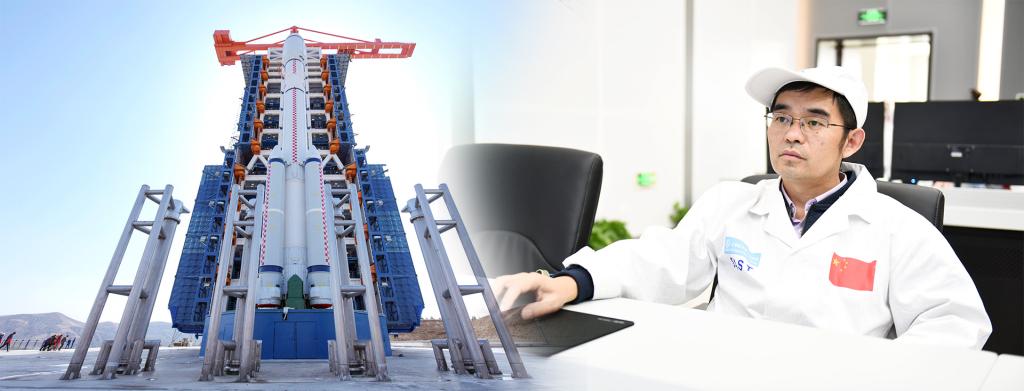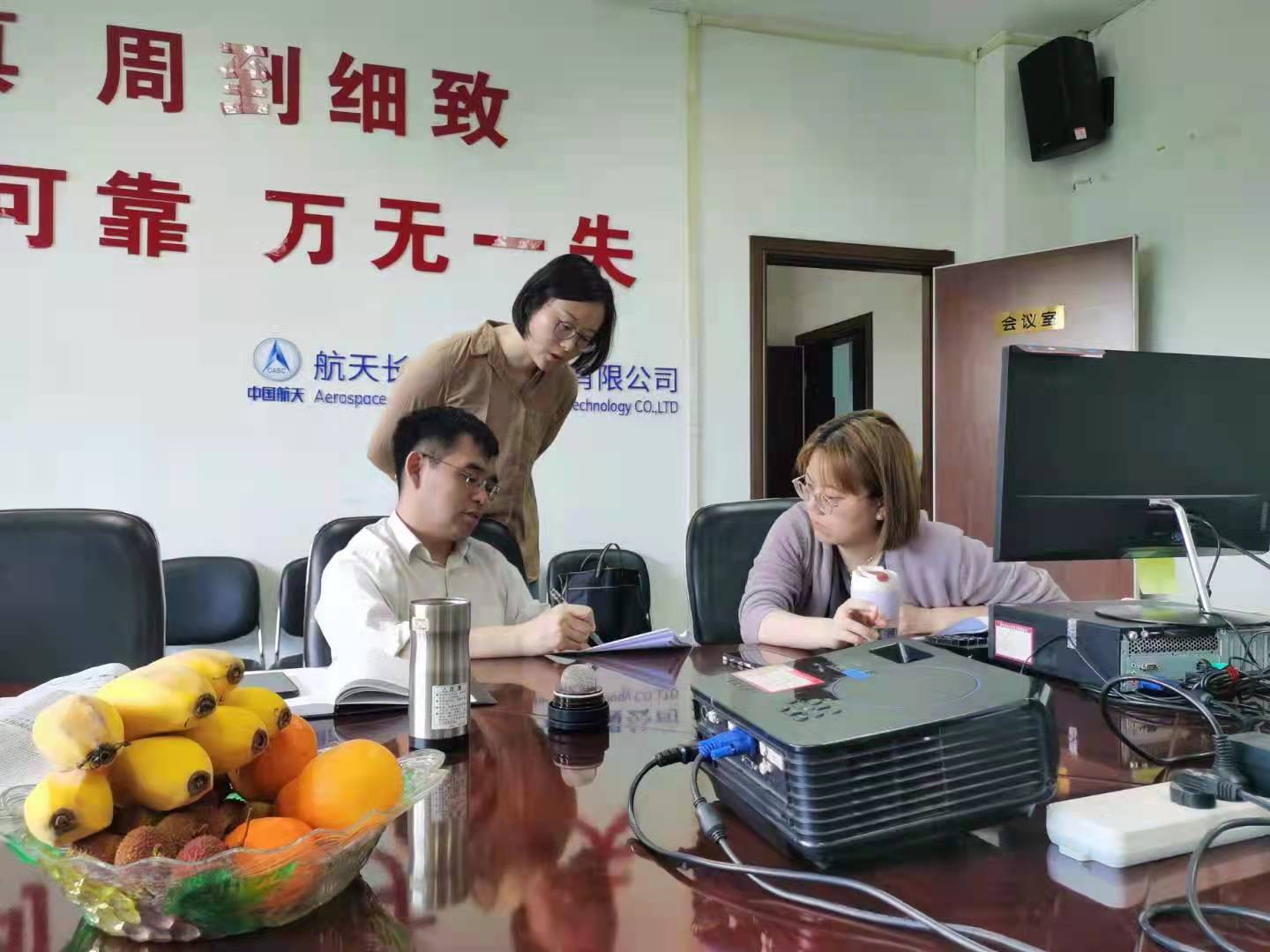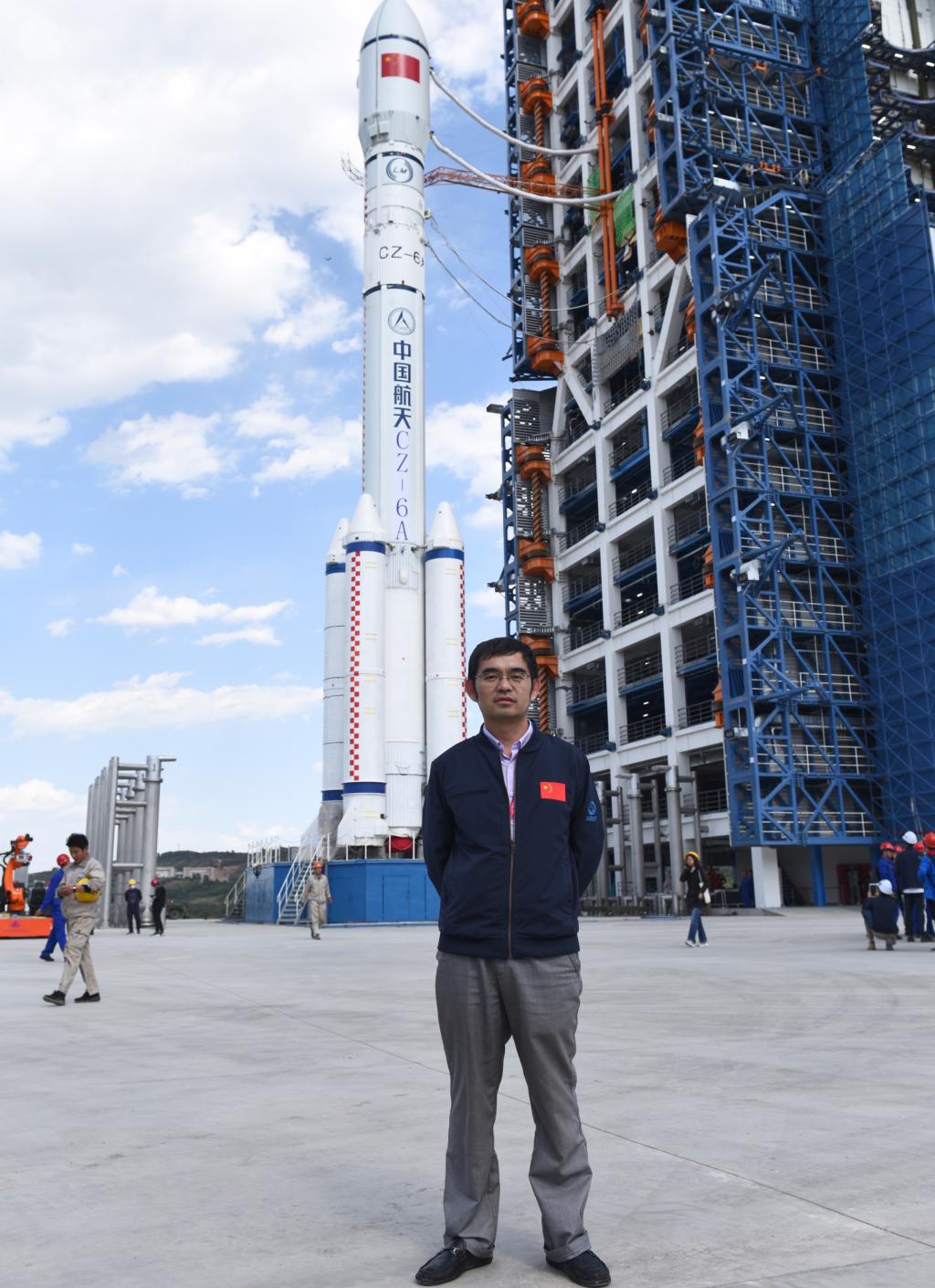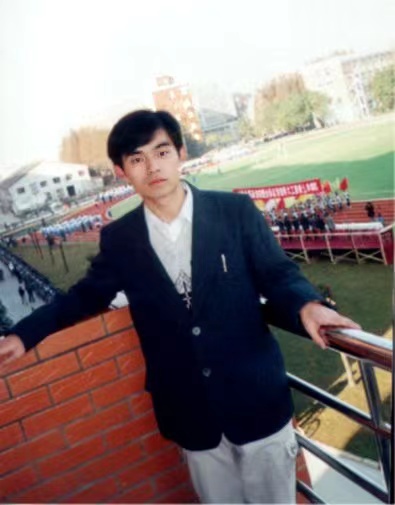On April 16th, 2022, the return capsule of the Shenzhou-13 manned spaceship landed successfully at the Dongfeng landing site. And on March 29th, Long March-6A, China's new type of medium-sized launch vehicle, conducted a successful maiden flight at the Taiyuan Satellite Launch Center in Shanxi province.

One of the overall developers from the Shanghai Academy of Spaceflight Technology is a graduate of USST: Xin Gaobo, who just returned with accolades from Taiyuan Satellite Launch Center. In the past 23 years since he was enrolled in 1999, the generation Y “science geek” has been working hard to achieve the aerospace dream.
The successful maiden flight of China's first “hybrid-propellant” Long March launch rocket, with new launch pads, new equipment, new procedures and new conditions, witnessed several remarkable “new” achievements. As the deputy chief designer, Xin Gaobo was responsible for the “intelligent diagnosis” system, which was also an unprecedented innovation. Under the new overall scheme, the Long March 6A flew into the sky with the new power system and electrical system.

The Long March 6A is propelled by a liquid-propelled core booster and four solid-fuel side boosters, which realizes a hybrid of liquid and solid engines in the aerospace area. The solid one has more a powerful thrust, better reliability and is easy to maintain, however, once fired, it can’t be shut down in an emergency; in contrast, the liquid booster can be turned off at any time. Therefore, it is necessary to first “diagnose” the health of the liquid engine before firing the solid one to successfully send the rocket to the sky.
To overcome this problem, Xin Gaobo led a team to install an intelligent health diagnosis system for the rocket, which could be compared to an intelligent medical doctor who had “fast, accurate and stable” medical skills. This device, which is only the size of a piece of B5 paper, can determine the working condition of the liquid-propelled core booster in just 0.3 seconds. If a fault is detected, the faulty engine will be immediately shut down and the solid engine will no longer be ignited, which ensures the safety and reliability of the rocket’s ignition and takeoff.

“Working day and night” became the norm of Xin Gaobo team: seeking out the law of parameters from tens of thousands of seconds of test data to determine the diagnosis algorithm of the health diagnosis system; simulating and verifying its effectiveness for thousands of times in two years; constantly participating in the real engine tests before and after...... He said: “ We always face hard moments of overturning our own proposed programs in the field, and each decision can also bring unknown technical risks. There is no so-called “manager-in-chief ”, but only technology workers who have the courage to discuss and innovate. This is the industry features that attracts me.”
Finally, Xin Gobo's team proved that the system was stable and reliable with zero errors after repeated “brainstorms”, overturning and rebuilding, researching and optimizing. It is worth mentioning that Xin Gaobo's team also configured three sets of identical diagnostic systems, which are equivalent to three “doctors” consulting the rocket at the same time. Only if at least two of them judge that the engine is faulty will the fault be finally “diagnosed”. This setup provides multiple guarantees for the reliable operation of the system.

Xin Gaobo named an area of his study as “Basic Knowledge Library”, which is specially set for professional books he learned in the university period so that he can flip through them from time to time to “gain new insights through reviewing old materials”. He confessed:“ The basic knowledge in professional courses should not be underestimated, and the solid foundation laid during the undergraduate period also provides strong support for my R&D work.” Xin Gaobo's “high demands” on himself also impressed his teachers. “In him, we can easily see the excellent qualities of innovation and pragmatism of USST students, and many teachers still remember him many years after his graduation.” Wang Wei, a teacher of Xin Gaobo during his study period and now secretary of the Party Committee of the Business School said. Teacher Wang Nan was impressed by Xin Gaobo's hands-on ability: “He was the core of the group each time they did experiments. From the pre-experiment preparation to the data collection and to the final result, his group always did a fast and good job.”

When Xin Gaobo graduated in 2003, “Electronic Engineering and Its Automation”, the major he studied, was very popular in the job market. At that time, high-paying leading industries offered “olive branches” to him while China’s aerospace industry was still in the development period. The news of the successful launch of the “The Long March 6A” has triggered heated discussions among the group of his classmates. Xin Gaobo’s friend Zheng Yi said that his misunderstanding at that time has now turned into admiration, and when they are still struggling to finish ordinary daily work, Xin Gaobo’s goal has long been to the starry sky.
After experiencing the whole process from the project establishment to the successful launch and the development of two new-generation rockets, Long March 6 and Long March-6A, 40-year-old Xin Gaobo has grown from an ordinary technician to the deputy chief designer of the model. Now he has a new direction: returning USST to study for a doctorate. “We must catch up on new knowledge. The end of one mission is the starting point of a new one. We will never stop for this mission of the supreme honor.” Xin Gaobo said.

 Home
·
News & Events
·
Content
Home
·
News & Events
·
Content

